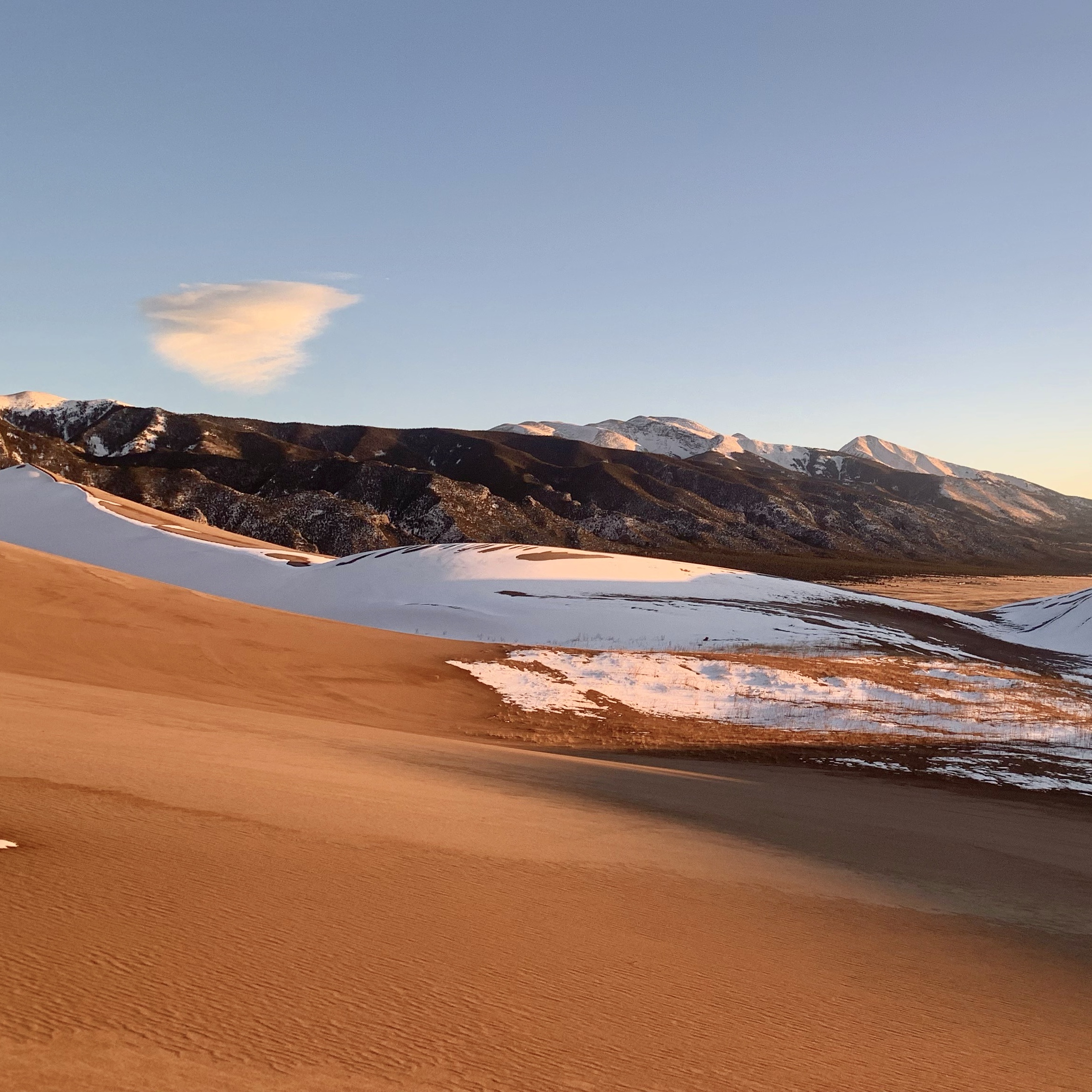Did you know that there are sand dunes in the United States? Real sand dunes, not just along a beach. If not, you should visit the Great Sand Dunes National Park & Preserve. It’s pretty amazing.
Where is the Park?
The park is located in the southern part of Colorado, close to the New Mexico border. There are several main roads that lead to the park. The website specifically warns people not to use typical computer or iPhone based mapping apps for directions. These resources are not always accurate for locating this particular park. Here is a link to helpful directions.
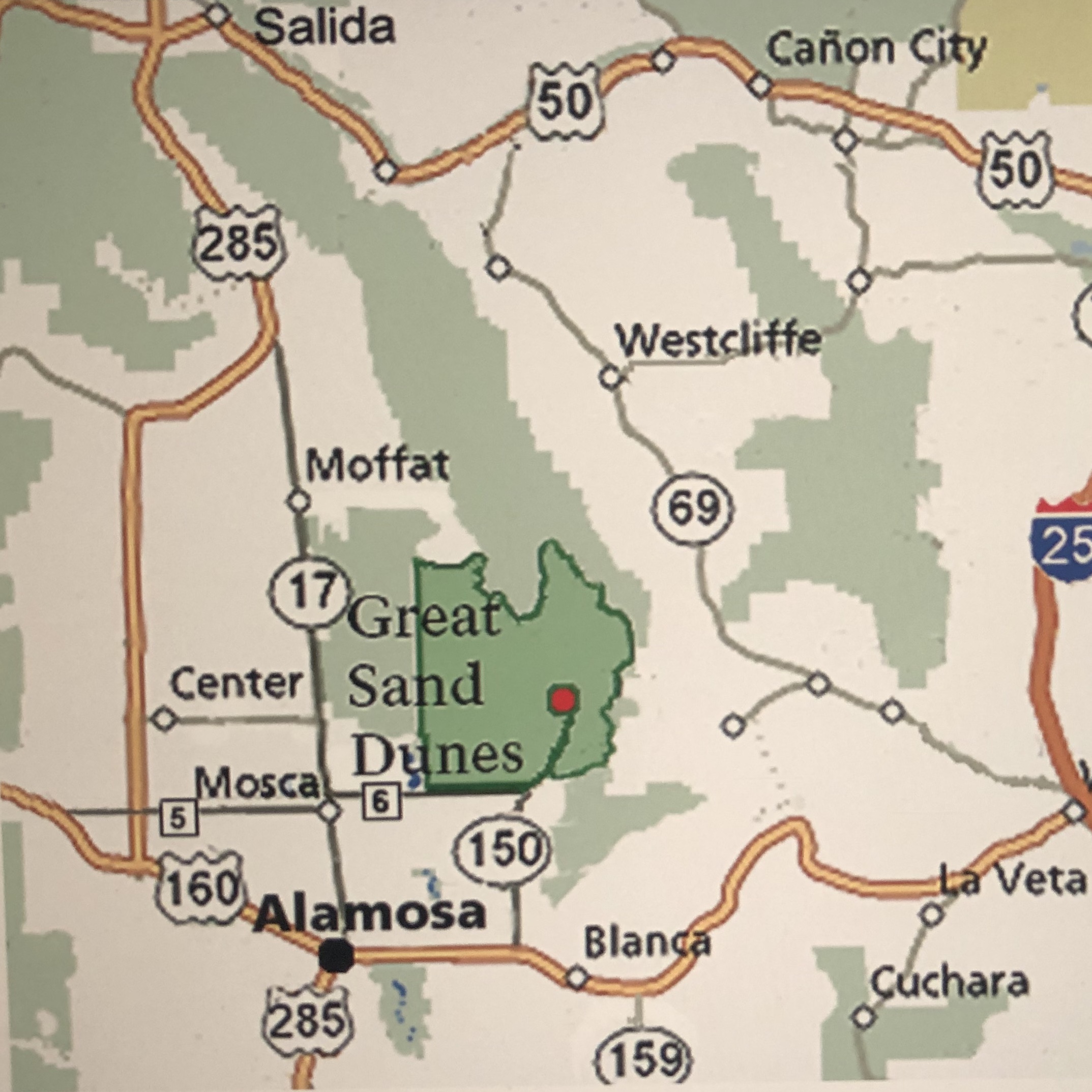
Panorama of the Sand Dunes

The sand dunes formed from sand blowing into the valley. It happened over a period of many thousands of years. As a result, there are about 30 square miles of sand dunes. The tallest sand dune in North America is in the park. It is 750 feet tall. Because the winds still blow, the dunes are constantly being reshaped. It is estimated that there are 1.2 cubic miles of sand in the dunes. The park and preserve protect 149,028 acres or about 232 square miles.
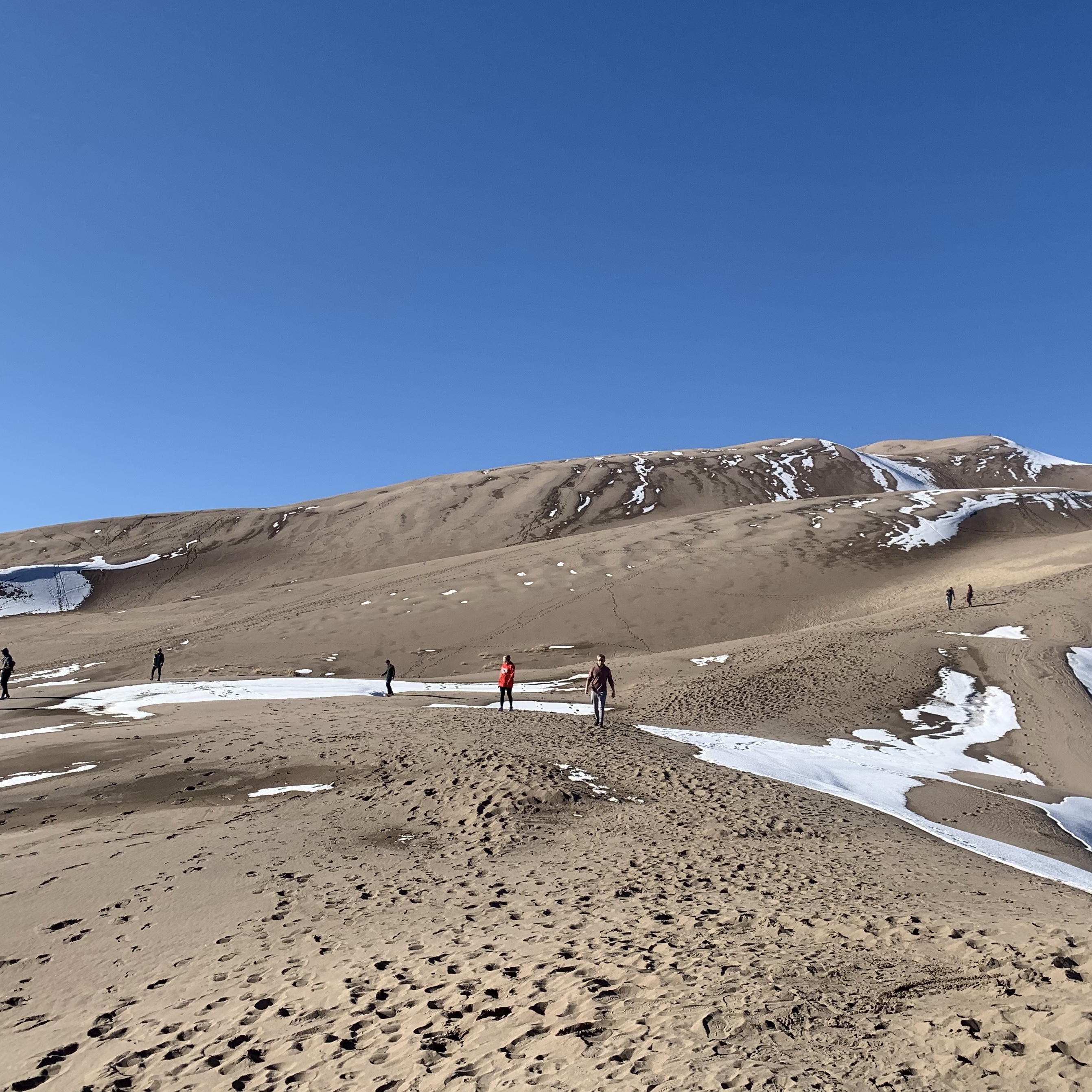
What to do at the Great Sand Dunes National Park & Preserve
This area offers so many things to do and places to explore. Of course, there are the dunes. In the spring there is even a beach created by the Medano Creek. You can also hike or backpack in surrounding mountains, sand board or sand sled, attend a ranger program, or go horseback riding. It’s a great place to combine some history with fun.
Past Footsteps
Evidence of people living near or visiting the sand dunes dates back 11,000 years. Nomadic hunters and gatherers were some of the first people to enter the San Luis Valley and the sand dunes. Clovis points, or spearpoints, found by archeologists are evidence of their presence.
Several American Indian tribes frequented the area. Evidence of connections is available for Utes, Jacarilla Apaches, and Navajos. For example, the phrase Saa waap maa nachest from the Ute tribe means “sand that moves”.
If you read Zebulon Pike’s journal from 1807 he writes about sand hills at the foot of the White Mountains. Standing on one of the taller dunes, he could see a large river to the south (the Rio Grande).
The area is steeped in rich history. From the early 1800’s on, early explorer and travelers passed through the area. The end result is the area being named a National Park & Preserve by an act of Congress on September 24, 2004.
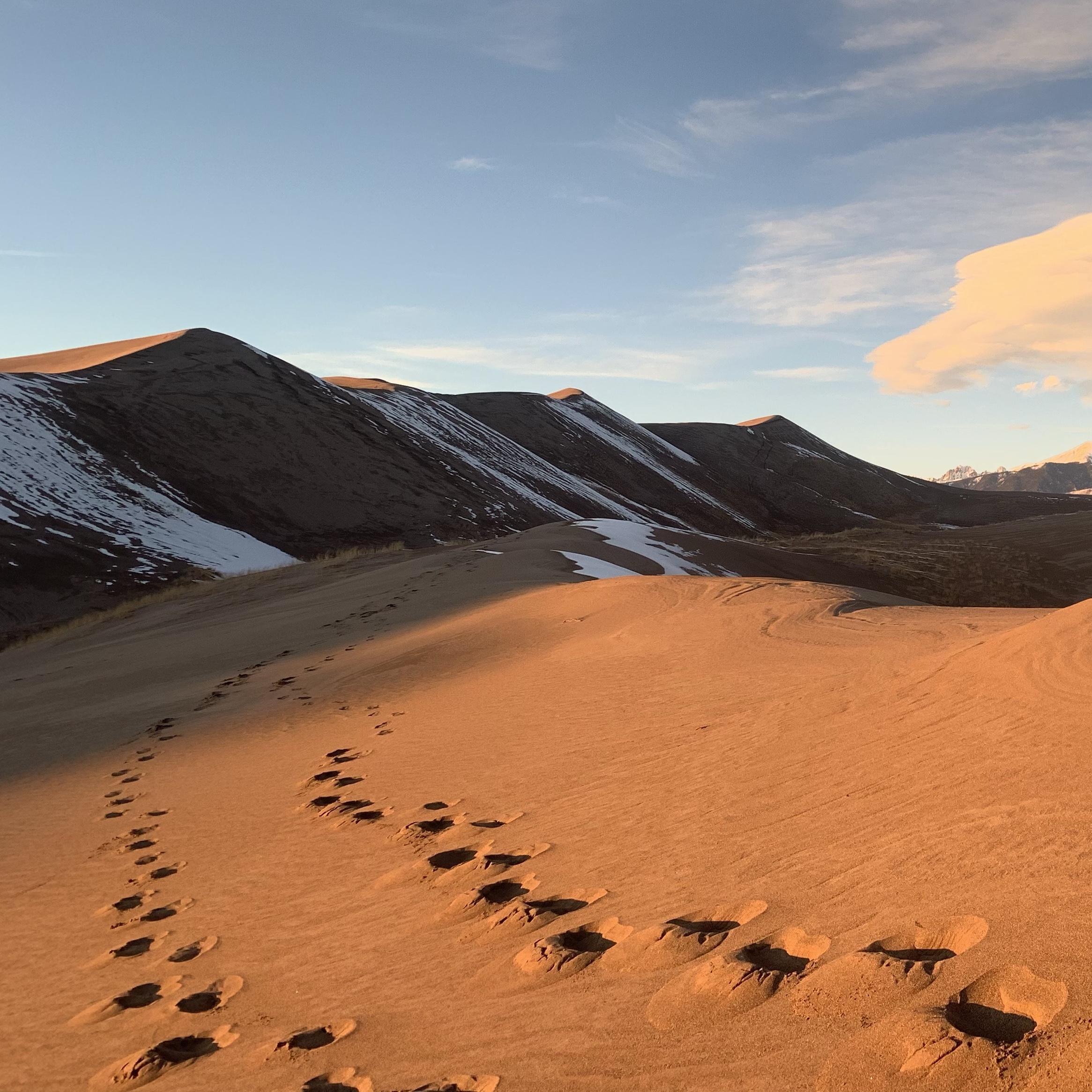
Colorado Sunset
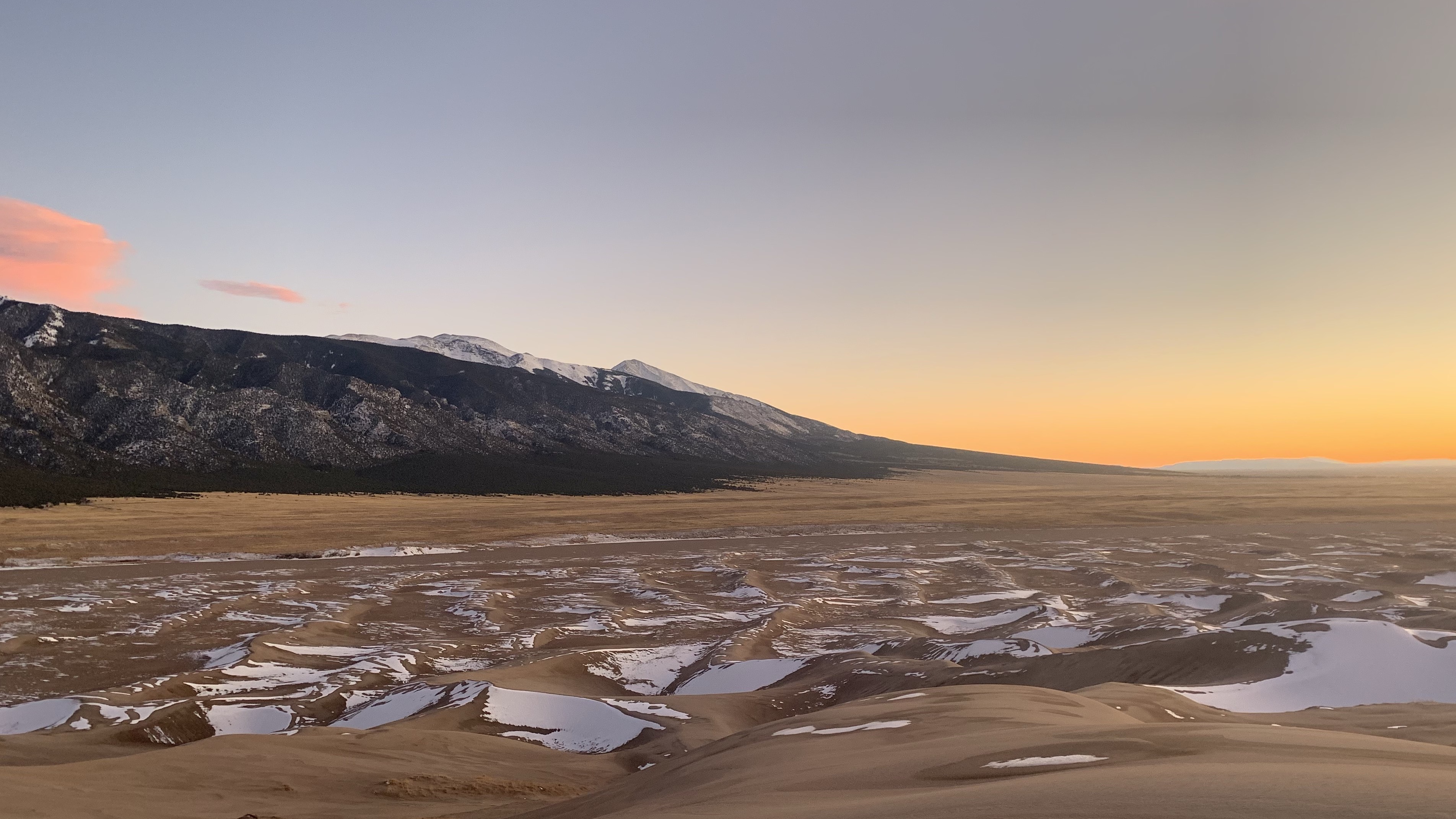
This park has something for everyone. It is disability friendly, and it has activities for even the most adventurous. There are also excellent opportunities to get a one of a kind photo. Above all, it's just a great place to have fun.
